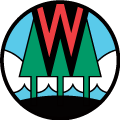Residents
- Webpage
Fire Management Dashboards
The dashboards below show information about wildfires and prescribed fires across the state. They include real-time and historic data. Select, filter and query the data for location- and date-specific information. You can also select, query and…
- Webpage
PFAS External Advisory Group
Subscribe to PFAS External Advisory Group UpdatesGov. Tony Evers declared 2019 the Year of Clean Drinking Water and signed Executive Order #40 in August 2019 to address the issue of PFAS (per- and polyfluoroalkyl substances) in Wisconsin.The PFAS…
- Webpage
Drinking Water and Groundwater Guidance
We welcome your input on all Drinking Water and Groundwater Program guidance. The guidance available for comment tab lists guidance that is being developed or revised. Feedback related to the documents posted should be emailed to the staff member…
- Webpage
USDA Forest Service Good Neighbor Authority (GNA) Agreement
GNA provides an opportunity for the state and others in the forestry community to work with the Chequamegon Nicolet National Forest (CNNF) to help increase the level of accomplishments on the national forest and see the benefits of increased forest…
- Webpage
Surface Water and Fish Tissue PFAS Sampling
The DNR's Water Quality Program, in cooperation with the Fisheries Management Program and other partners, is conducting a multi-year, statewide monitoring project to sample fish tissue and water chemistry at select sites around the state near known…
- Webpage
PFAS and Foam on Waterways
Foam is a common occurrence on Wisconsin waterways and can often be observed floating on the surfaces of lakes and rivers. Surface water foam can form as a result of natural processes or from human-caused discharges such as runoff of contaminants…
- Webpage
Transient Non-Community (TN) Resources
A transient non-community water system (TN or TNCWS) is a public water system that provides water in a place such as a gas station or campground where people do not remain for long periods of time. Transient Non-Community Water System Fact Sheets…
- Webpage
Wisconsin's Great Waters 2020 Photo Contest and Writing Project
The Office of Great Waters is pleased to present our 12th annual calendar, along with the winners and submissions from the 2020 Great Waters Photo Contest and Writing Project. As the calendar, photos and writings clearly show, the Great Lakes…
